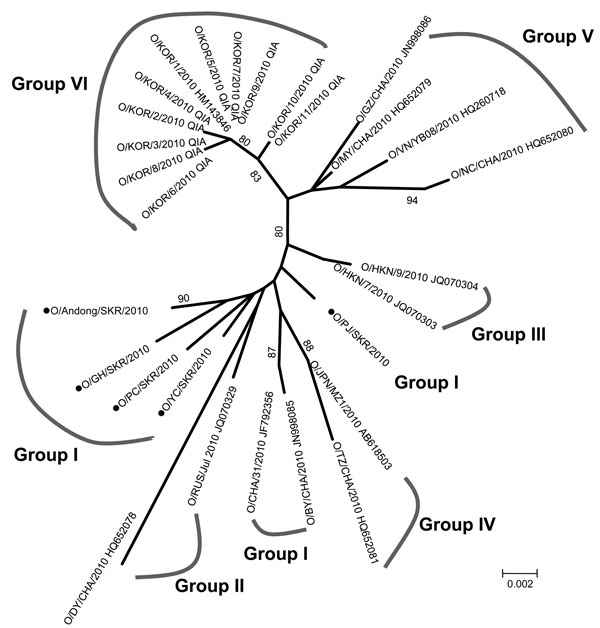Volume 19, Number 4—April 2013
Dispatch
Control of Foot-and-Mouth Disease during 2010–2011 Epidemic, South Korea
Figure 2

Figure 2. . . Phylogenetic analysis of viral protein 1 sequences of serotype O foot-and-mouth disease viruses isolated in South Korea (black dots) and other Asian countries, 2010. The tree was constructed by using the neighbor-joining method in MEGA5 (www.megasoftware.net). Percentages in which the associated taxa clustered together in the bootstrap test (1,000 replicates) are shown next to the branches. Scale bar indicates nucleotide substitutions per site. CHA, China; HKN, Hong Kong; JPN, Japan; RUS, Russia; SKR or KOR, South Korea; VN, Vietnam.
Page created: March 04, 2013
Page updated: March 04, 2013
Page reviewed: March 04, 2013
The conclusions, findings, and opinions expressed by authors contributing to this journal do not necessarily reflect the official position of the U.S. Department of Health and Human Services, the Public Health Service, the Centers for Disease Control and Prevention, or the authors' affiliated institutions. Use of trade names is for identification only and does not imply endorsement by any of the groups named above.